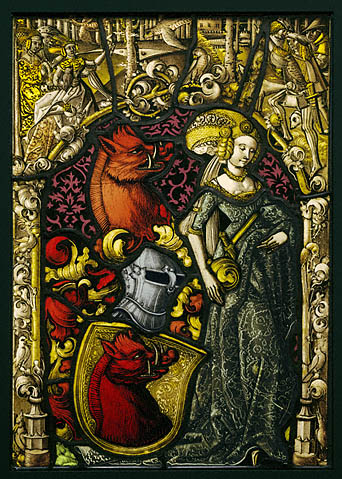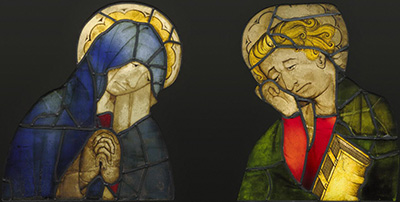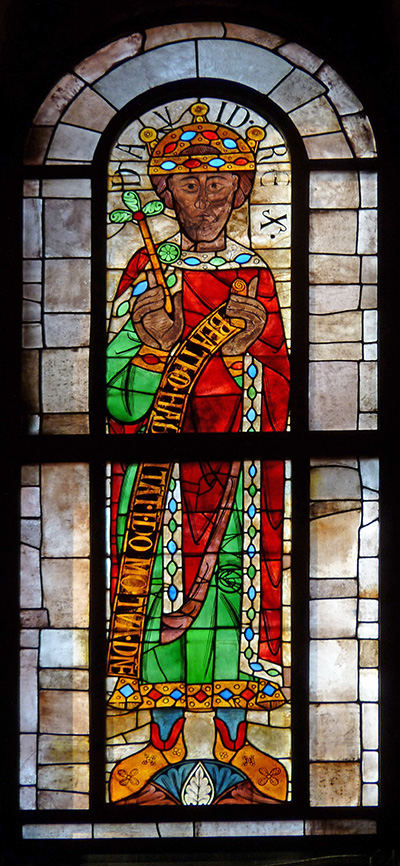Stained Glass Art Of Medieval Cathedrals
 The feeling that accompanies walking into a medieval cathedral is incomparable: As you enter the cavernous main chamber of the structure, the sound of your own breath and footfalls is suddenly magnified. There is a sense of ageless continuity, as if a river of time flows beneath the building, carrying the energy of the many worshipers who have expressed their devotion within. Gazing up at the intricate scenes displayed on the stained glass windows—while the floor around you is bathed in their glowing colours—you can easily forget about the buzz of the modern world outside. Instead, you fall into the sacred realm of biblical stories and revel in their grandeur.
The feeling that accompanies walking into a medieval cathedral is incomparable: As you enter the cavernous main chamber of the structure, the sound of your own breath and footfalls is suddenly magnified. There is a sense of ageless continuity, as if a river of time flows beneath the building, carrying the energy of the many worshipers who have expressed their devotion within. Gazing up at the intricate scenes displayed on the stained glass windows—while the floor around you is bathed in their glowing colours—you can easily forget about the buzz of the modern world outside. Instead, you fall into the sacred realm of biblical stories and revel in their grandeur.
This effect is no accident: The medieval artisans who crafted these stunning pieces of large glass art absolutely had both impact and permanency in mind. Contemporary art historians believe that stained glass windows were much more than just a luxurious form of decoration or a method of proclaiming the glory of the Christian religion. At the time of their creation, they were intended to be true—and lasting—works of art. They were, in all regards, paintings rendered in glass. And they conveyed the religious message to the illiterate masses.
As the Khan Academy explains, ‘During the Gothic period and the Renaissance (1100s–1500s) stained glass art was one of the foremost techniques of painting practiced in Europe. It may seem surprising to call stained glass a form of painting, but in fact it is. Look closely at the image here  [The Virgin and Saint John] and note that the surfaces of each piece of glass are painted in a wide range of dark tones.
[The Virgin and Saint John] and note that the surfaces of each piece of glass are painted in a wide range of dark tones.
One of the most widespread forms of painting, stained glass art inspired the lives of the faithful through religious narratives in churches and cloisters, celebrated family and political ties in city halls, and even decorated the windows of private houses.’
To understand why medieval artists chose what might, at first blush, appear to be a highly impractical medium to paint with, we need to take a closer look at medieval art techniques. While most modern viewers see the flat, plain, and drab appearance of many conventional paintings from the middle ages as indicative of an overall dark and backwards time, this is not actually the case. The simplistic quality of the bulk of these works is not due to a lack of talent or sophistication on the part of medieval artists. While it’s true that some knowledge of the arts was lost (at least within Western Europe) with the fall of the Western Roman Empire, artists in the middle ages were far from being childlike dabblers. Instead, the underwhelming nature of many medieval paintings can be laid at the door of the mediums available during the era.
Painters in the middle ages lacked access to oil paints (these would not be invented until the Renaissance). As such, they worked almost exclusively with tempera paints, which carry a number of limitations. Chiefly, they dry extremely quickly, making it harder for the artist to blend shades or render fine details. Furthermore, they cannot be applied too thickly, so the painter cannot achieve the deep colouration possible with oils. Medieval artists realised these inherent limitations as surely as we do, and in their frustration, they turned to a much more malleable and richly colouful material: Glass.
 Coloured glass had been used in windows since Roman times, though never with such detail as we see applied in the creation of true stained glass windows. While many Roman glassmaking techniques were lost in the West after Rome fell, evidently this one was retained and, as it evolved, it took on a unique devotional aspect. From about the 6th century AD onwards, artists built on their existing knowledge of how to make coloured glass, eventually becoming adept at working with vitreous paints. These paints, which are formed by mixing iron oxide and ground copper with powdered glass to create a range of striking shades, can be applied directly to glass and then fired in place. Once fused in this manner, the pigments are permanently affixed to the glass; unlike conventional paints, they will not fade or crack with age. Additionally, unlike paintings, windows cannot easily be stolen—a vital advantage in an age when looting was common. Medieval glass painters were therefore creating, with purpose and intention, works of devotional large glass art that would be as enduring as their faith.
Coloured glass had been used in windows since Roman times, though never with such detail as we see applied in the creation of true stained glass windows. While many Roman glassmaking techniques were lost in the West after Rome fell, evidently this one was retained and, as it evolved, it took on a unique devotional aspect. From about the 6th century AD onwards, artists built on their existing knowledge of how to make coloured glass, eventually becoming adept at working with vitreous paints. These paints, which are formed by mixing iron oxide and ground copper with powdered glass to create a range of striking shades, can be applied directly to glass and then fired in place. Once fused in this manner, the pigments are permanently affixed to the glass; unlike conventional paints, they will not fade or crack with age. Additionally, unlike paintings, windows cannot easily be stolen—a vital advantage in an age when looting was common. Medieval glass painters were therefore creating, with purpose and intention, works of devotional large glass art that would be as enduring as their faith.
Rather than being limited by the deficits of their age, medieval artisans found creative ways to overcome them. Not only did glass allow for the creation of more vivid and detailed artworks, the style in which they are rendered—with strong black lines separating blocks of striking colour—makes even small stained glass art paintings visible from a distance. They therefore could be used to help ‘tell’ biblical stores to large congregations of people who were otherwise illiterate. They were, both literally and metaphorically speaking, illuminating.
When framed in this context, it’s clear that medieval stained glass art ought to appreciated with the same reverence we hold for the works of Renaissance painters. From the oldest surviving stained glass windows still in situ (the Prophet Windows in Bavaria’s Augsburg Cathedral, c. 1065) to detailed masterpieces like the Swiss Heraldic Panel with the Arms of the Eberler Family, c. 1490, medieval stained glass windows are an essential part of Western Europe’s artistic legacy.
